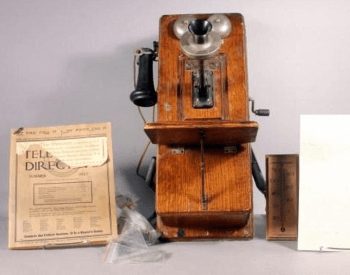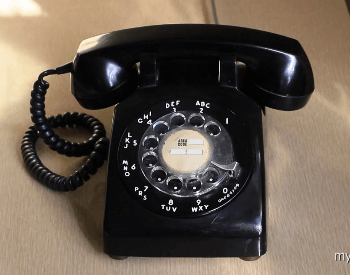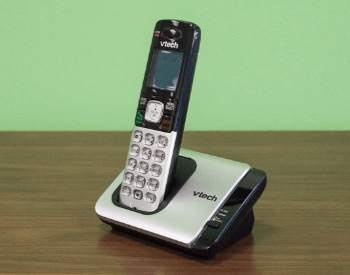
This web page contains telephone facts for kids and is an excellent resource for anyone of any age looking to learn about telephones. Our goal is to provide you with accurate, up to date facts about telephoness. In addition to facts about the telephone, we provide additional resources to help you with your research on this communications method.
The telephone facts below will help you learn about telephones, who invented the first telephone, how a telephone works, the different types of telephones and other telephone related facts. We hope these telephone facts are interesting and help you learn more about this revolutionary communications technology.
If any of the below telephone facts are inaccurate, please contact us and let us know.
21 Telephone Facts for Kids
- A telephone is a device that allows two or more people to communicate over a long distance.
- A traditional telephone converts audio sounds into an electrical signal, which is then sent over a cable or other communication channels, and then converted back to audio on the receiver’s end.
- A traditional telephone system (landline) is known as a POTS or plain old telephone service.
- Alexander Graham Bell was awarded the first patent for an electric telephone by the United States Patent and Trademark Office (USPTO) in March 1876.
- The patent number for the first electric telephone is U.S. Patent No. 174,465.
- The first telephone call was between Alexander Graham Bell and Thomas Watson.
- The first words spoken on a telephone call were Alexander Graham Bell stating to his assistant Thomas Watson, “Mr. Watson – come here – I want to see you.”
- The first phonebook was published in 1878, and it fit on one sheet of paper.
- One of the first people to have a telephone in their home was American writer Mark Twain (Samuel L. Clemens).
- In the early years of the telephone, switchboard operators would connect calls between two parties. Over time, they were replaced by automatic switchboards.
- A cordless telephone was a portable telephone that eliminated the need for a cable connecting the handset to the base of the phone. The range of cordless telephones is limited and other wireless devices using the same frequency would affect performance and quality.
- A payphone is a coin-operated public telephone that could be used by anyone to make a call. With the rise of mobile devices, payphones have become mostly obsolete in developed countries.
- An answering machine was a device connected to a telephone line and allowed callers to leave a message if you didn’t answer the phone. Traditional answering machines have been replaced by digital voicemail services.
- A mobile phone, also known as a cell phone, is a phone without any wires that makes calls over a radio frequency.
- The first mobile phone available was released in 1983, and it was called the DynaTAC 8000x.
- VoIP (Voice over Internet Protocol) is a communications method that uses the internet to transmit communications, instead of public switched telephone network (PSTN).
- The first VoIP phone was called InternetPhone and was created by VocalTec in 1995.
- To honor Alexander Graham Bell, after his death in 1922 all telephones stopped ringing for one full minute.
- In 2013, a survey showed that about 69% of people over the age of 40 still used a phonebook to look up a number.
- In 2013, a survey showed that only 5% of people under the age of 40 used a phonebook at least once.
- In 2013, a survey showed that only 5% of people have used a pay phone in the last 12 months.
Telephone Pictures



Additional Resources with Telephone Facts
- Who Invented the Telephone? – Find out who is the inventor of the telephone on the Library of Congress website.
- History of the Telephone – Learn about the history of the telephone on the Comporium Pioneer Club website.
- Timeline of the Telephone – View a timeline of the major milestones and inventions for the telephone.
